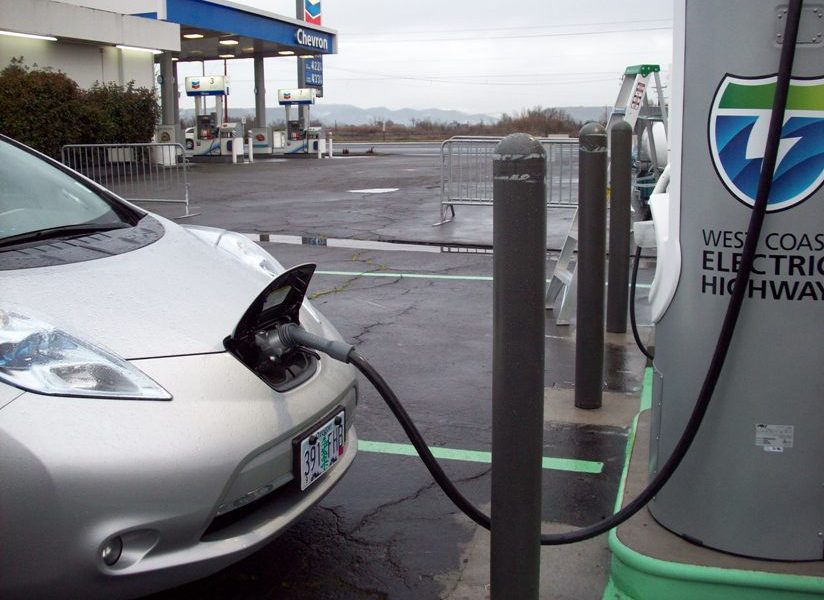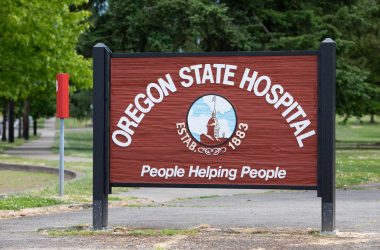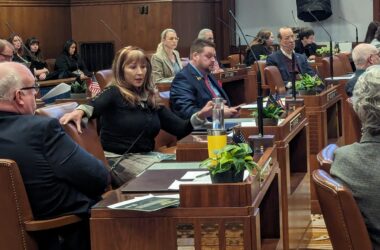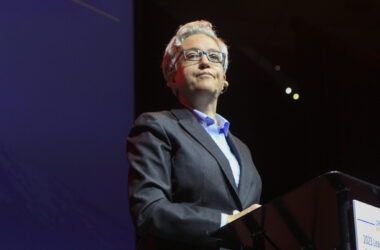Two years ago, Oregon joined California and Washington in requiring school bus, delivery van, garbage truck and semi-truck manufacturers to begin offering more zero-emission vehicles fueled by electricity and hydrogen.
Now, the three states are joining together with a plan to power them on drives on the West Coast.
The Oregon Department of Transportation and California and Washington’s transportation agencies submitted a joint application last month to the U.S. Department of Transportation for federal funding to build the West Coast Truck Charging and Fueling Corridor.

The plan involves building 34 medium- and heavy-duty electric vehicle charging stations and five hydrogen fueling stations primarily along 1,400 miles of Interstate 5 and its corridors leading to major freight hubs in San Diego, Los Angeles, San Francisco, Portland and Seattle.
Medium and heavy-duty trucks account for nearly 30% of the U.S.’s total greenhouse gas emissions, according to the U.S. Environmental Protection Agency. Transportation, including freight, is the largest source of greenhouse gas emissions in Oregon, the state Department of Environmental Quality says.
State agencies are unable to disclose the amount they’ve asked for because their application is under review, according to Matt Noble, a spokesperson for Oregon’s transportation department. The program they applied to is offering up to $700 million in grants for the year.
In a May letter to U.S. Department of Transportation Secretary Pete Buttigieg, 39 California members of Congress advocated for federal help funding the West Coast Truck Charging and Fueling Corridor, which was described as a first-of-its-kind project that would benefit people disproportionately impacted by heavy-duty vehicle emissions.
“The cities and regions that will benefit from this project constitute the majority of the most polluted areas in the United States, based on the major categories of air pollution tracked by the American Lung Association,” they wrote.
Then last month, California Energy Commission officials discussed applying for federal funding at a meeting, according to the electricity policy publication RTO Insider. State officials hope their application is approved this year under the first round of Charging and Fueling Infrastructure grants included in the Bipartisan Infrastructure Law passed by Congress in 2021. The grant will provide $2.5 billion over five years for alternative fueling infrastructure on major roads and interstates across the U.S. The federal government will pay up to 80% of projects, with applicants funding the remainder.
Portland-based Daimler Truck North America and Florida-based NextEra Energy and global investment firm BlackRock are also collaborating on a nationwide, $650 million privately funded alternative-fuel charging network called Greenlane. It includes building out a West Coast network similar to that being pursued now by the Western state governments.
Daimler Truck is one of few truck manufacturers in the U.S. building heavy-duty electric vehicles for freight. Sean Waters, vice president of compliance and regulatory affairs at the company, said in an email that Daimler supports and looks forward to working with the West Coast states as a potential private partner in assisting with their truck charging and fueling corridor.
“Electrifying the commercial vehicle fleet is key to meeting the nation’s climate goals and will yield the greatest environmental benefits given the frequent use and vehicle miles traveled,” he wrote.
Oregon Capital Chronicle is part of States Newsroom, a network of news bureaus supported by grants and a coalition of donors as a 501c(3) public charity. Oregon Capital Chronicle maintains editorial independence. Contact [email protected]. Follow Oregon Capital Chronicle on Facebook and Twitter.

Alex Baumhardt has been a national radio producer focusing on education for American Public Media since 2017. She has reported from the Arctic to the Antarctic for national and international media, and from Minnesota and Oregon for The Washington Post. She previously worked in Iceland and Qatar and was a Fulbright scholar in Spain where she earned a master's degree in digital media. She's been a kayaking guide in Alaska, farmed on four continents and worked the night shift at several bakeries to support her reporting along the way.









